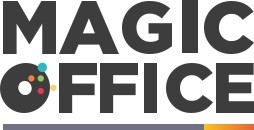
Understanding Digital Purchase Orders
Introduction to Digital Purchase Orders
In today's fast-paced business environment, the shift from traditional purchase orders to digital purchase orders is becoming increasingly crucial for companies in the UK. A digital purchase order is essentially an electronic document that replaces the conventional paper-based order system. This transformation is not just about moving from paper to digital; it involves a complete overhaul of the procurement process, integrating technology to streamline operations.
Key Features of Digital Purchase Orders
Digital purchase orders offer several features that enhance the purchasing process:
- Real-time Data Entry: Unlike manual purchase orders, digital systems allow for real-time data entry, reducing errors and improving accuracy.
- Automated Approval Workflow: The order process becomes more efficient with automated workflows, ensuring timely approvals and reducing bottlenecks.
- Integration with Existing Systems: Digital purchase orders can seamlessly integrate with existing order software and procurement systems, enhancing overall efficiency.
- Mobile Accessibility: With mobile app support, businesses can manage purchase requests and approvals on the go, ensuring flexibility and responsiveness.
From Manual to Digital: A Seamless Transition
The transition from a manual purchase order system to a digital one involves several steps. Initially, businesses need to evaluate their current order process and identify areas where a digital system can add value. This involves understanding the current data flow, approval processes, and supplier interactions. By doing so, companies can tailor the digital purchase order system to meet their specific needs, ensuring a smooth transition.
For those interested in further enhancing efficiency, timely alerts can play a significant role in maintaining productivity. You can explore more about this in our detailed guide on timely timecard alerts.
Benefits for UK Companies
The Transformative Impact on Procurement in the UK
Implementing digital purchase orders can revolutionize how UK businesses manage their procurement process. The switch from traditional purchase to an electronic system offers substantial benefits that streamline operations, reduce costs, and enhance efficiency. With the integration of a digital order system, companies can easily track and manage purchase requests and order approvals in real time. This shift minimizes the risk of errors commonly encountered with manual data entry and paper-based systems.
One significant advantage of digital purchase orders is the increase in operational efficiency. These systems automate the process, allowing staff to focus on strategic tasks rather than getting bogged down with paperwork. For instance, once a purchase request is submitted through a digital system, it is swiftly routed to the appropriate personnel for approval, cutting down the time it traditionally takes with manual purchase orders.
Moreover, businesses gain better control and oversight over their procurement process. Digital systems provide a centralized repository of purchase orders and related data, enhancing transparency and facilitating more informed decision-making. This centralized access also helps in maintaining a stronger relationship with suppliers, as it ensures all parties have visibility into the order process and can keep track of goods services more effectively.
For businesses looking to maintain a competitive edge, adopting digital order software is a step towards modernizing procurement workflows. Furthermore, this transformation aligns with the trend towards integrating practice management software into business operations, showcasing a commitment to driving efficiency across all levels of the organization.
Integration with Existing Systems
Seamlessly Integrating Digital Purchase Orders with Current Systems
Incorporating electronic purchase order systems into your business can substantially streamline the procurement process of goods and services. A successful digital integration requires a focus on harmonizing the new system with your existing infrastructure. This transition involves synchronizing data and ensuring that the workflow between digital tools and your current procedures is seamless.
First and foremost, assess your current software and processes to identify how they interact with paper-based methods. The aim is to shift from manual purchase orders to a digital environment easily. Workflow compatibility is essential. Consider how digital systems address purchase requests and order processing in comparison to traditional methods. This involves migrating approval workflows, supplier order data, and purchase order tracking into the new digital purchase order system.
Additionally, integration should account for real-time data reporting and analytics to enhance decision-making within the procurement process. By implementing order software that interfaces smoothly with your current systems, the time spent on orders and procurement activities can be significantly reduced. This efficiency boost leads to faster order approval and reduces errors common in manual data entry.
As companies adopt digital procurement platforms, it's crucial to select software that supports mobile app functionalities, allowing staff to manage orders on-the-go. Mobile access is transformative, offering flexibility and increasing the speed at which purchase requests and approvals are processed.
For a deeper exploration of strategies related to enhancing the onboarding and agent experience within UK companies, explore the implications of digital systems on efficiency and employee engagement.
Overcoming Implementation Challenges
Addressing the Challenges of Implementation
Transitioning from traditional purchase orders to a digital system can be daunting for many UK businesses. However, understanding the potential challenges can help in planning a smoother implementation process. One of the primary hurdles is the resistance to change. Employees accustomed to paper-based methods may find it difficult to adapt to a digital purchase order system.
To tackle this, it's crucial to involve staff early in the process. Engage them with demonstrations of the new order software and highlight the benefits, such as reduced manual data entry and faster approval times. This can ease the transition and increase acceptance.
Another challenge is ensuring compatibility with existing systems. Many businesses have legacy systems that may not seamlessly integrate with new digital purchase order software. Conducting a thorough analysis of your current procurement process and IT infrastructure can help identify potential integration issues. Collaborating with software providers to customize solutions can also aid in overcoming these hurdles.
Data security is a concern when moving to electronic purchase orders. Implementing robust security measures to protect sensitive purchase data is essential. This includes ensuring that the order process is encrypted and that access to the system is restricted to authorized personnel only.
Finally, consider the cost implications. While digital systems can save time and reduce errors in the long run, the initial investment can be significant. It’s important to budget for both the purchase of the software and any necessary updates to existing systems. By addressing these challenges head-on, businesses can effectively transition to a more efficient and streamlined purchasing process.
Training and Support for Staff
Ensuring Seamless Adaption for Staff
Implementing digital purchase orders in a UK company is a strategic step toward modernizing the procurement process. However, the success of this technological transition heavily depends on the staff's ability to adapt to the new digital system. Ensuring that employees are well-trained and supported during this transition is crucial. To facilitate this, consider the following strategies:- Comprehensive Training Programs: Develop detailed training sessions that cover all aspects of the digital purchase order process—from the initial order request to the final approval. Utilizing both theoretical and practical approaches will prepare the employees for real-time scenarios. Encourage questions and provide clear answers to ease any confusion.
- User-Friendly Software: Choose a digital purchase order software that is intuitive and aligns with the existing procurement processes. A system that closely mimics traditional purchase steps will make the transition smoother for employees accustomed to paper-based methods.
- Regular Feedback and Support: Create a feedback loop where staff can share their experiences with the new system. Regular feedback sessions allow for quick identification of issues, enabling timely adjustments to the workflow. Providing ongoing support through a designated IT helpdesk or specialist can alleviate any technical difficulties and improve confidence in using digital tools.
- Gradual Implementation: If feasible, introduce the digital purchase order system gradually. This phased approach can help staff adjust without overwhelming them, ensuring a steadier learning curve.
Future Trends in Digital Purchase Orders
The Evolution of Digital Purchase Order Systems
As the landscape of procurement continues to evolve, so does the technology that drives it. Recognizing the inefficiencies of paper-based methods, businesses are increasingly adopting digital purchase order systems, leading to transformative benefits in how orders are handled. The future of digital purchase orders is set to enhance these practices even further.
One area of exciting development is the integration of artificial intelligence (AI) and machine learning within digital systems. These technologies can automate the procurement process, offering predictive analytics to help businesses forecast purchasing needs and optimize inventory levels. By reducing manual data entry, the workflow becomes more efficient, allowing staff to allocate their time to strategic tasks rather than repetitive processes.
Additionally, with the rise of mobile apps, access to the digital purchase order system becomes more flexible and real-time. Procurement teams can approve purchase requests on-the-go, speeding up the order process and maintaining better control over the purchasing cycle. This integration supports a seamless approval process, minimizing delays and improving supplier relationships.
Furthermore, the digitization of catalogs will continue to present opportunities for enhancing efficiency. By housing product data in a centralized repository, businesses can streamline their order requests and tailor offerings to specific needs. The digitization of goods and services catalogue simplifies the decision-making process, ensuring that procurement decisions are data-driven and aligned with business goals.
Overall, the future of digital purchase orders lies in continued innovation and adaptability. As technology advances, the systems will become more intuitive and tailored to the unique requirements of each business, simplifying their procurement workflow while also offering robust support systems for implementation and training.













